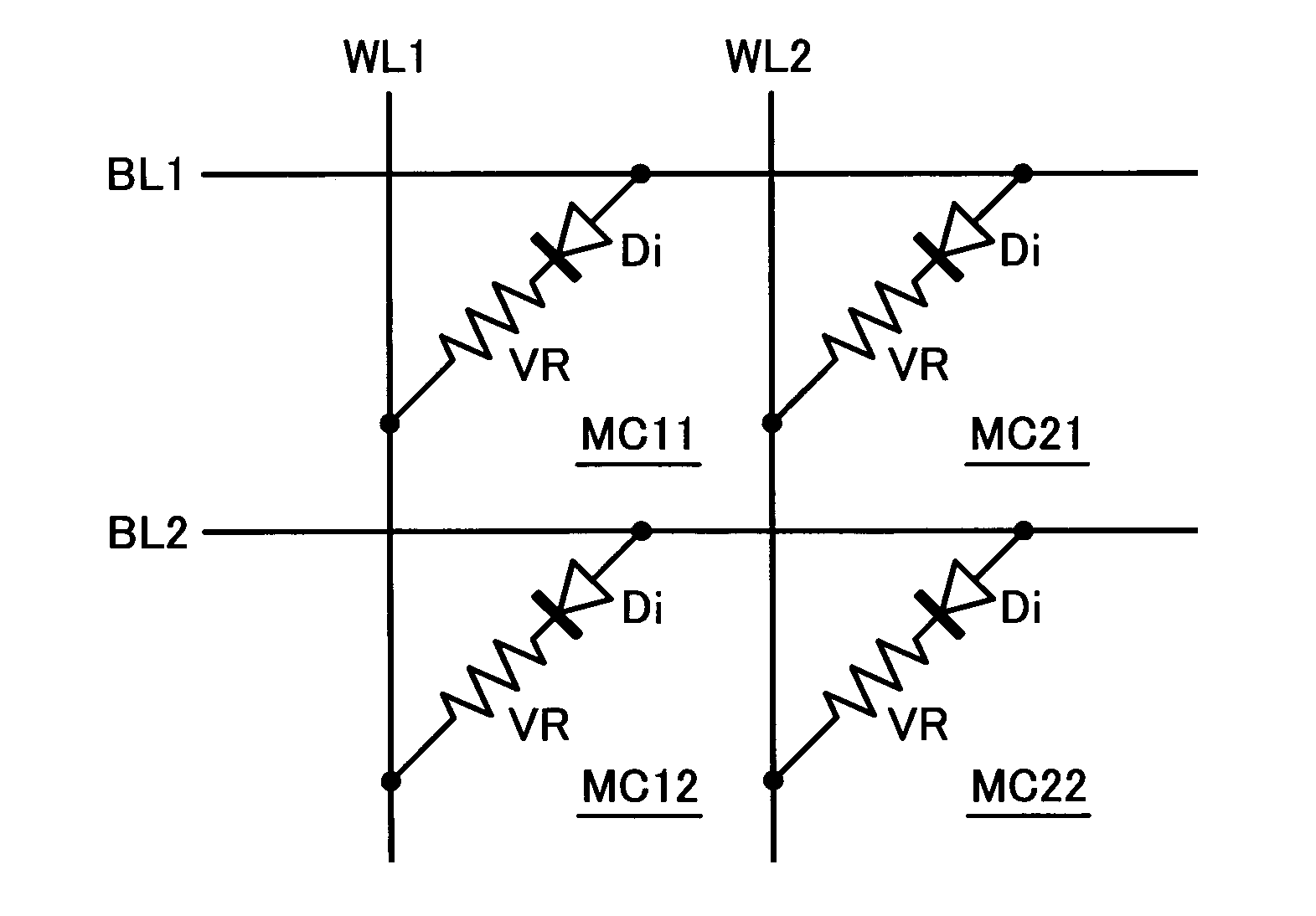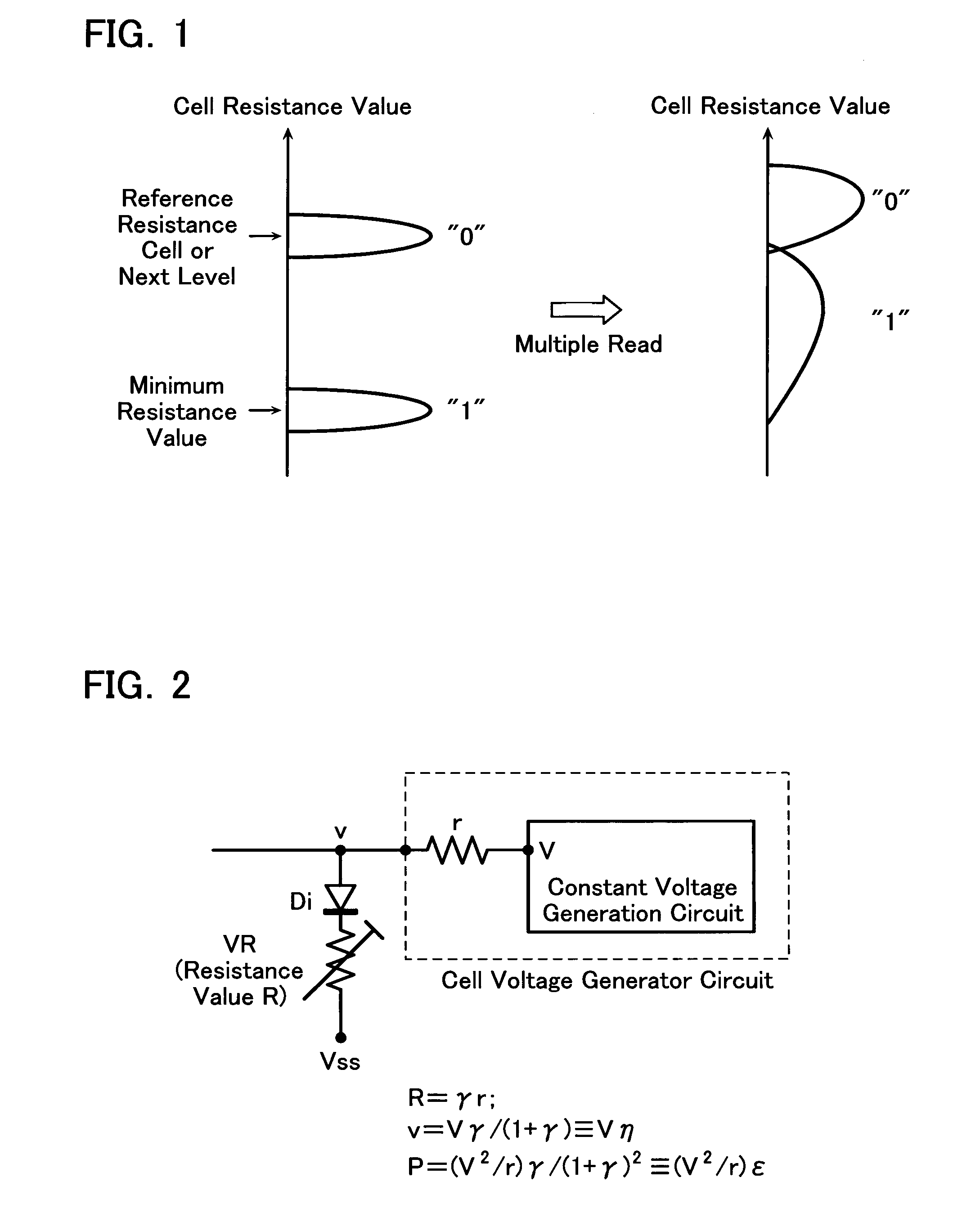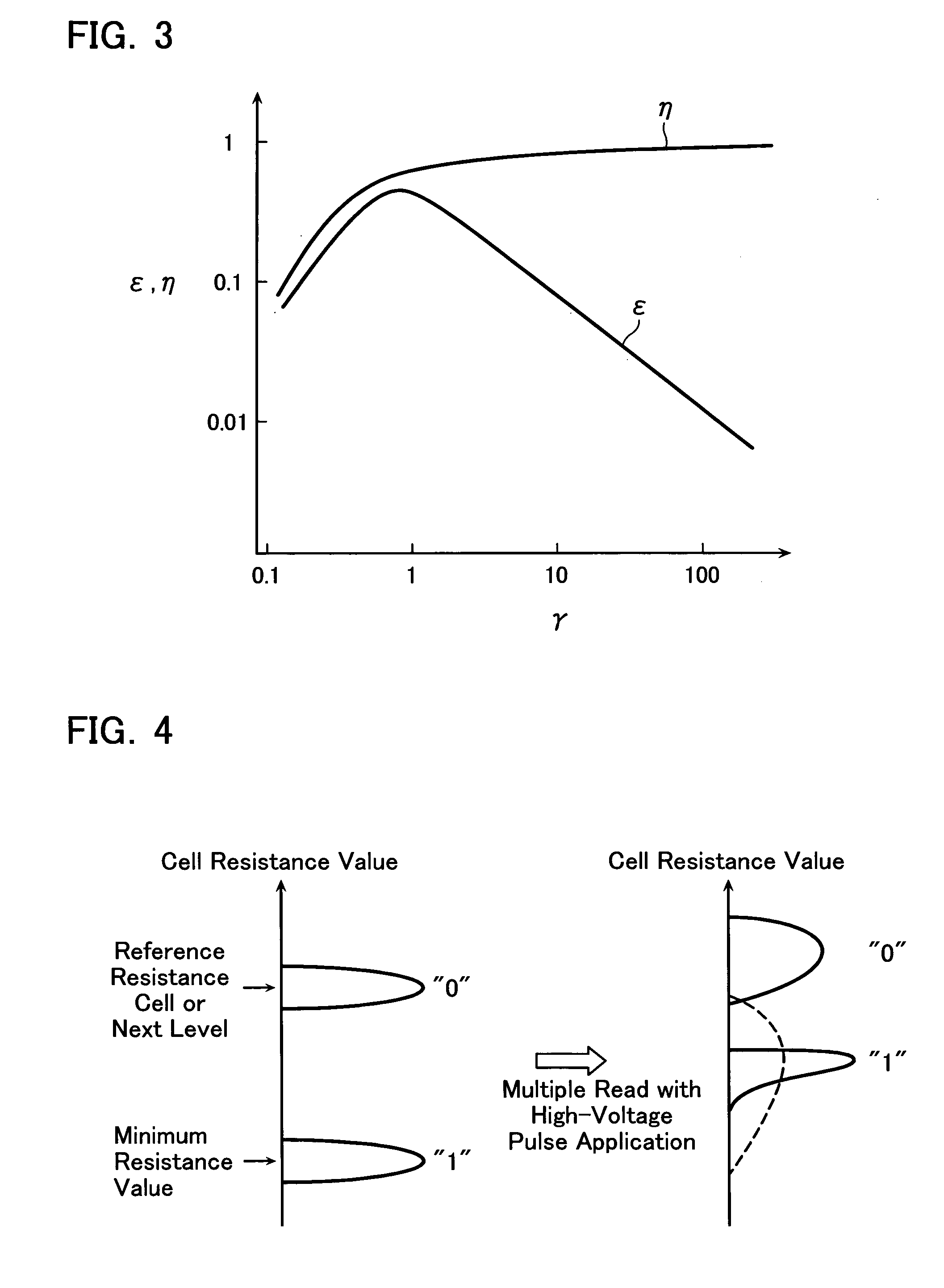Resistance-changing memory device
a memory device and resistive state technology, applied in static storage, digital storage, instruments, etc., can solve the problems of degradation of the reliability of reram, disturbance occurring during reading by detection of resistive state of a cell, and easy influence of the resistive value of a cell, etc., to achieve the effect of improving the reliability of data storag
- Summary
- Abstract
- Description
- Claims
- Application Information
AI Technical Summary
Benefits of technology
Problems solved by technology
Method used
Image
Examples
Embodiment Construction
[0025]In this invention, in view of the nature of ReRAM that the resistive state of a memory cell is easily affectable by disturbance during reading, a refresh operation is performed after a read operation, for returning the cell's resistance value to an expected value. In the refresh operation, the characteristics of a resistance-changeable material of the cell are utilized to perform an operation which forces it to reach and stay at a fixed resistance value in a self-convergent manner. This refresh operation is performed by applying a voltage pulse to a selected cell after completion of data reading, thereby setting a voltage value and pulse width time of the voltage pulse in accordance with the resistance value, at which the self-convergence is aimed.
[0026]Prior to the explanation of an embodiment for practical implementation, a detailed explanation will be given of the disturbance that occurs due to readout of ReRAM. The disturbance during read-accessing poses problems in a case...
PUM
 Login to View More
Login to View More Abstract
Description
Claims
Application Information
 Login to View More
Login to View More - R&D
- Intellectual Property
- Life Sciences
- Materials
- Tech Scout
- Unparalleled Data Quality
- Higher Quality Content
- 60% Fewer Hallucinations
Browse by: Latest US Patents, China's latest patents, Technical Efficacy Thesaurus, Application Domain, Technology Topic, Popular Technical Reports.
© 2025 PatSnap. All rights reserved.Legal|Privacy policy|Modern Slavery Act Transparency Statement|Sitemap|About US| Contact US: help@patsnap.com



